Abstract
OBJECTIVE. We examined the association of patterns of ambulatory care for AIDS patients with any use of the emergency room (ER) and the monthly rate of ER visits in the six months after AIDS diagnosis. DATA SOURCES/STUDY SETTING. The study population was obtained from the New York State Medicaid HIV/AIDS Research Data Base and includes patients diagnosed with AIDS from 1983 to 1990. DATA COLLECTION/EXTRACTION METHODS. To examine patterns of care and ER use not leading to hospitalization, we studied patients who survived at least six months after their first AIDS-defining diagnosis. The data base included person level information on visits to different provider sites and patient demographic and clinical characteristics. STUDY DESIGN. We defined the dominant provider as the site delivering the majority of ambulatory care for patients with a minimum of four ambulatory visits in the six months after AIDS diagnosis. Dominant providers were classified by specialty and setting: generalist physician; general medicine clinic; AIDS specialty clinic; and other specialty clinic or physician (e.g., cardiology). Patients without a dominant provider were grouped into those with four or more visits and those with fewer than four visits. Regression analysis was used to estimate relationships between ER use and patterns of ambulatory care and patient demographic and severity of illness characteristics. PRINCIPAL RESULTS. The study population included 9,155 AIDS patients aged 13 to 60 years at diagnosis, continuously Medicaid-enrolled, and surviving at least six months after AIDS diagnosis. Among those with four or more visits (56 percent), over 70 percent had a dominant provider. Overall, 39 percent of the study population visited the ER while, in the group with four or more visits, 53 percent of those without a dominant provider had an ER visit. Patients without a dominant provider were estimated to have 32 percent higher odds of ER use than patients with a dominant provider. Among patients with a dominant provider, patients with a generalist or primary care clinic dominant site of care were estimated respectively to have 18 percent and 23 percent lower odds than patients with an AIDS specialty clinic as the dominant site of care. Drug users had higher odds of ER use, as did women. CONCLUSIONS. In this Medicaid AIDS population, a dominant provider delivering the majority of a patient's care was associated with less use of the ER by the patient. Among patients with a dominant provider, ER use was lowest for those with a primary care provider. Further examination of the type and availability of ambulatory services in AIDS specialty clinics and primary care settings, as well as more detailed information on patient characteristics, may reveal reasons for these patterns of ER use.
Full text
PDF


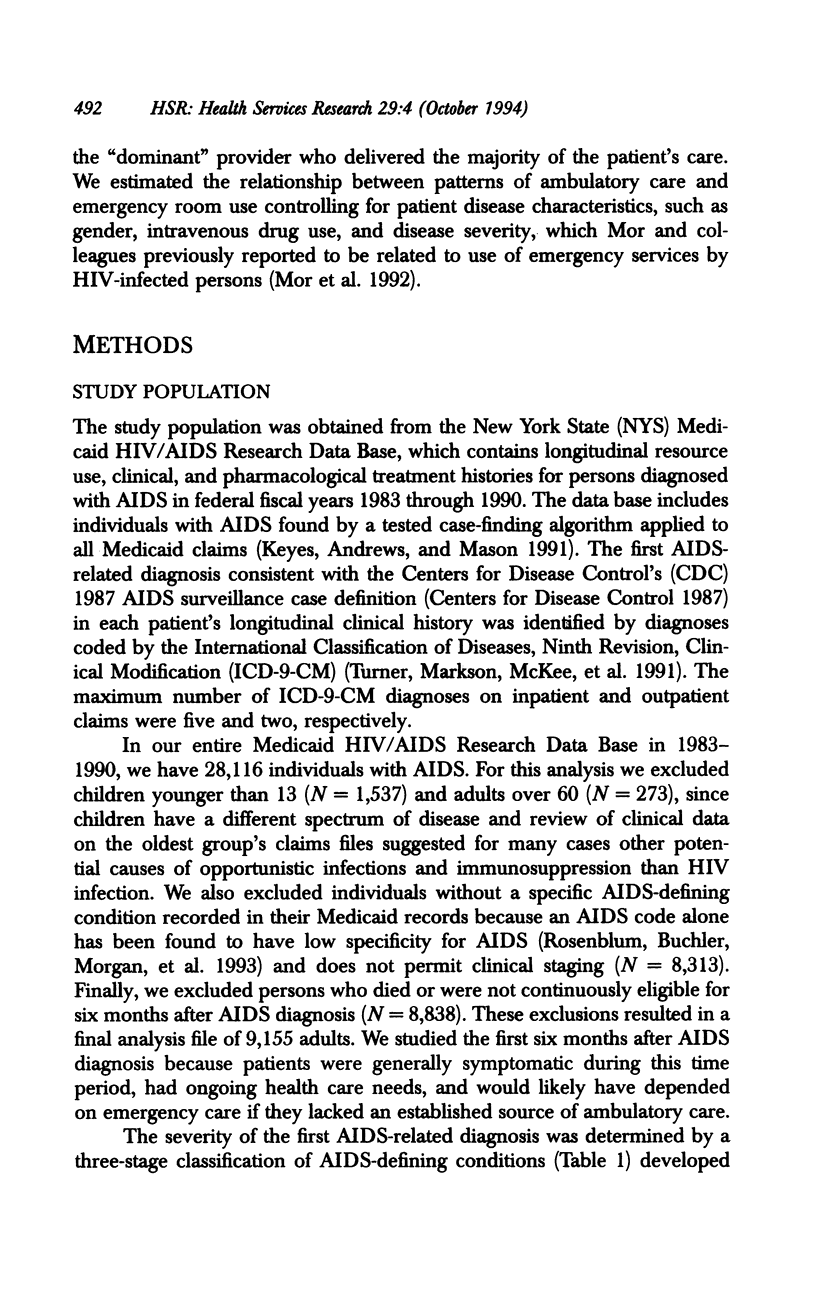
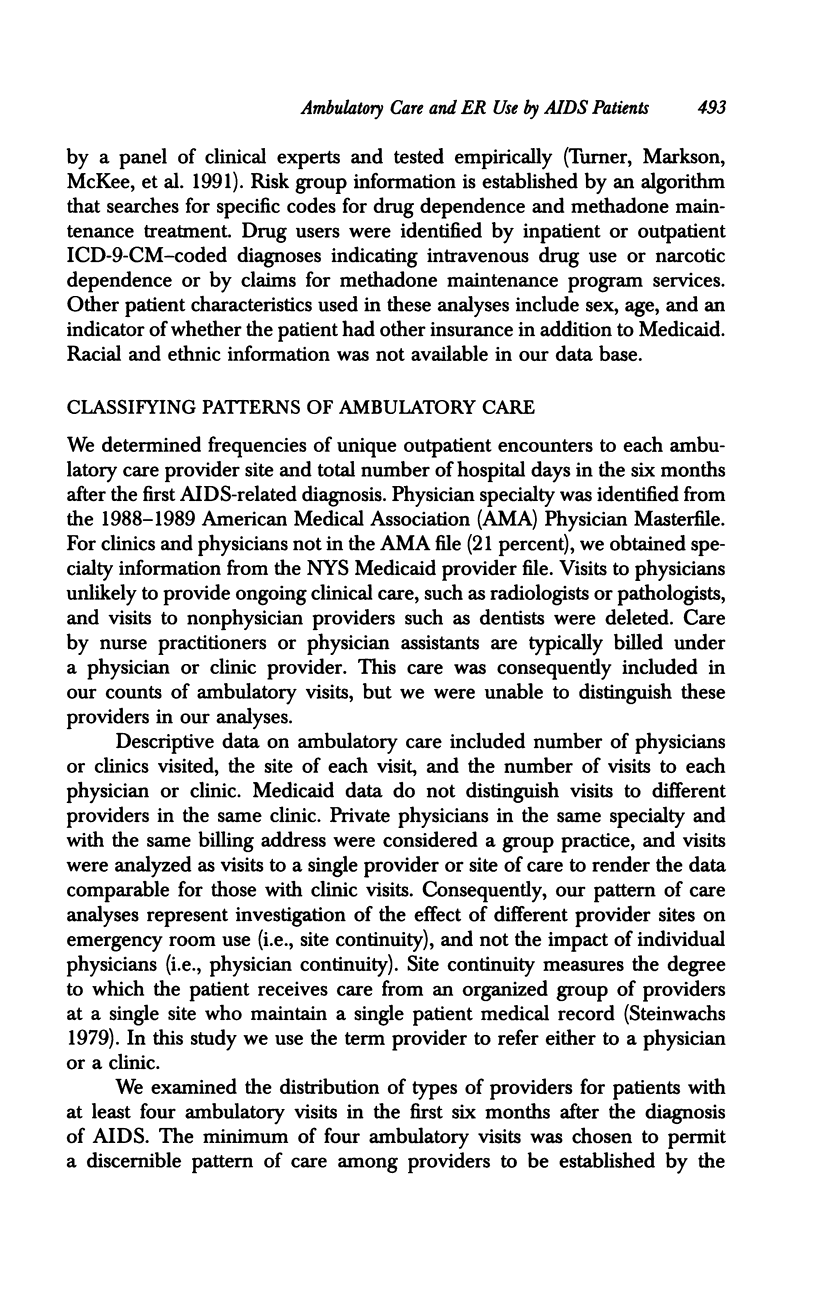

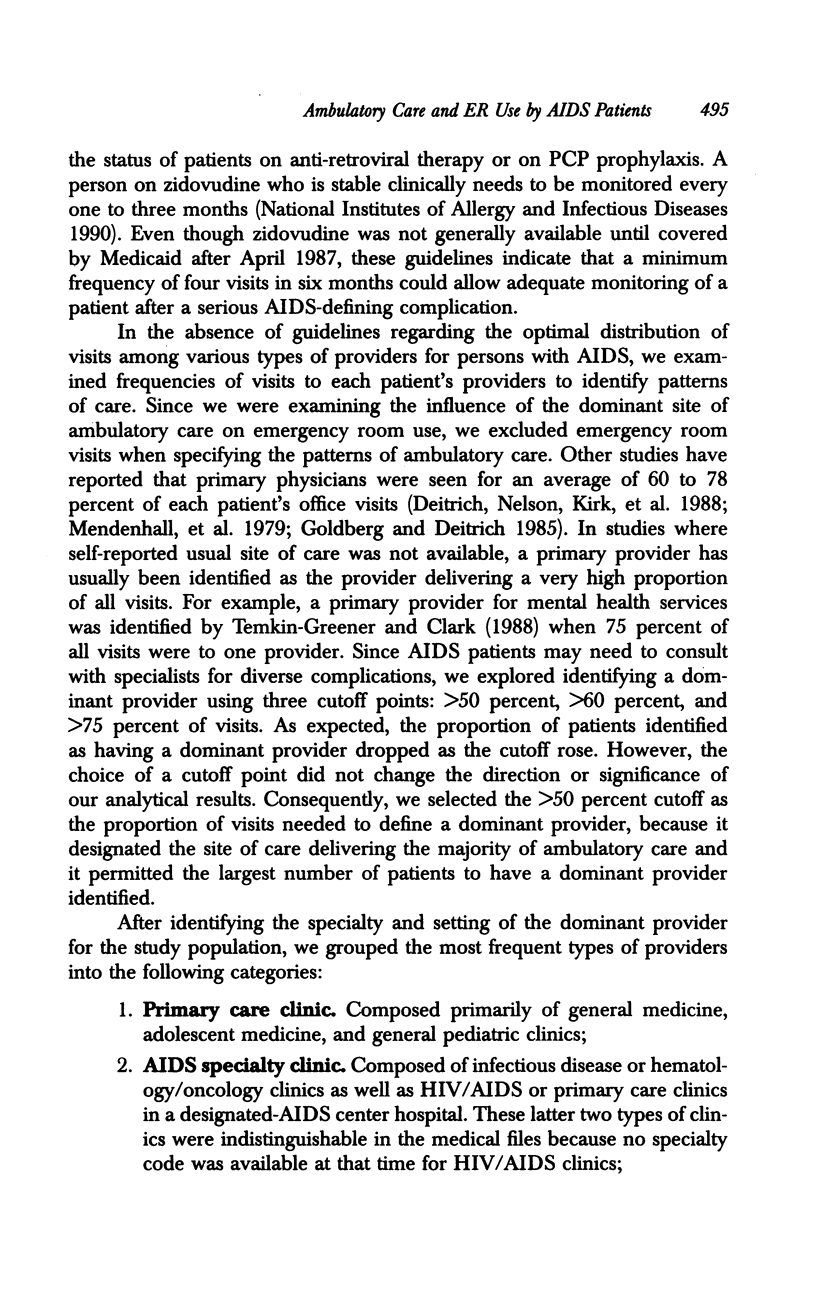
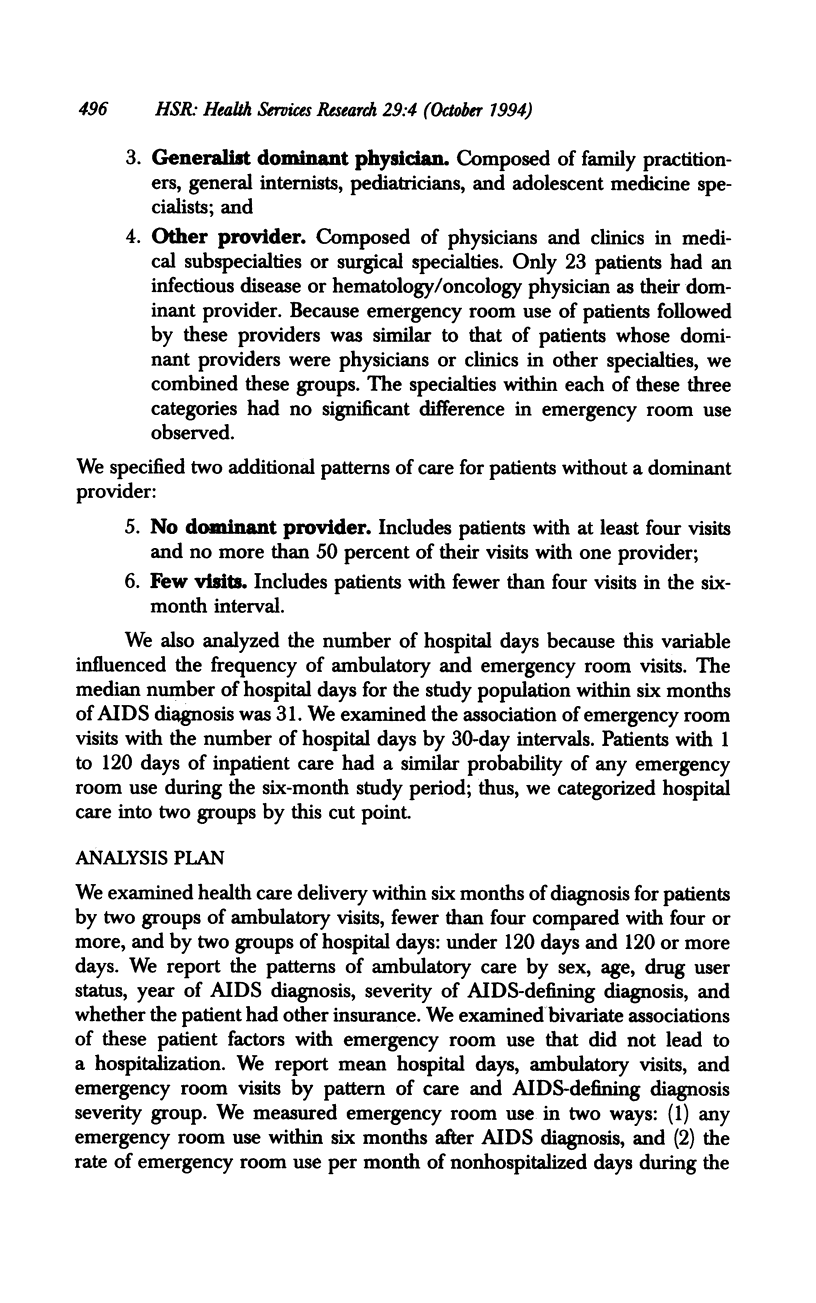
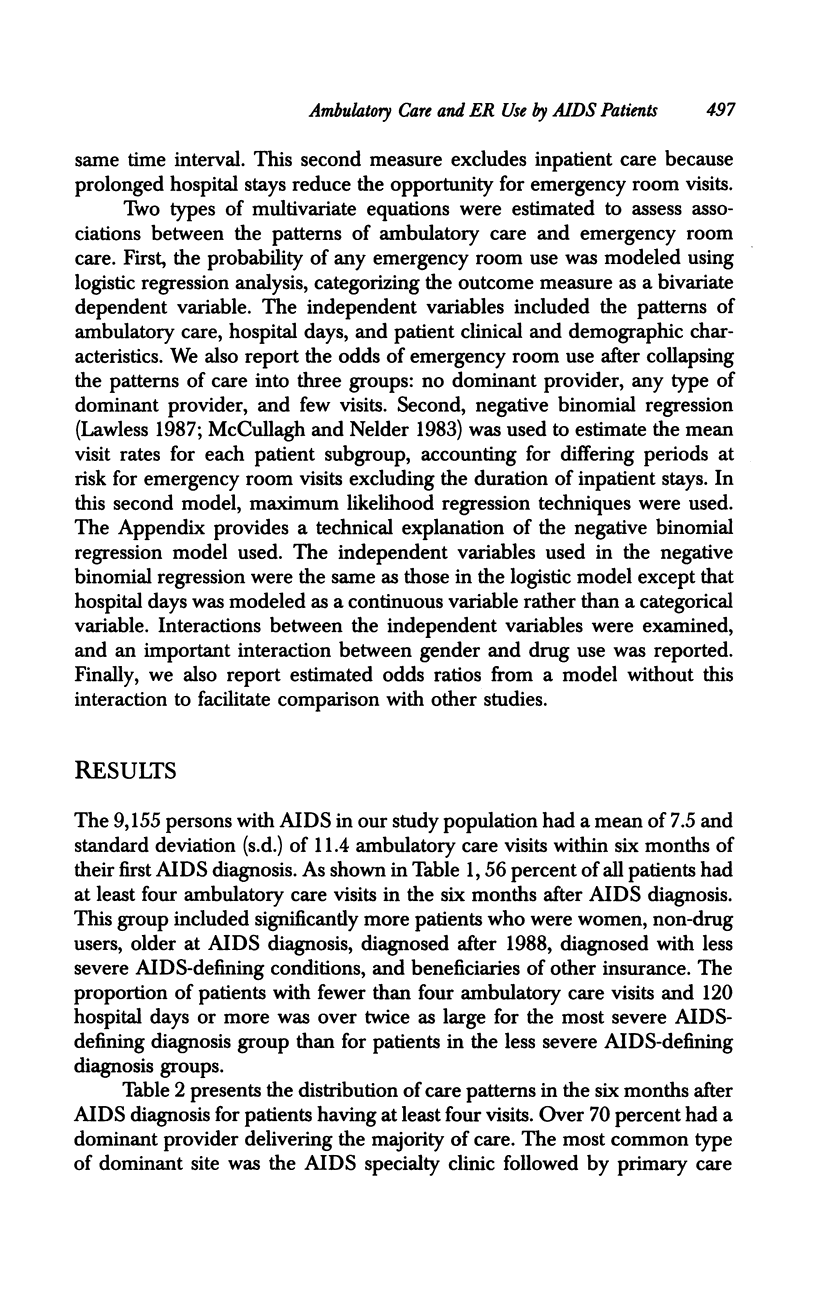

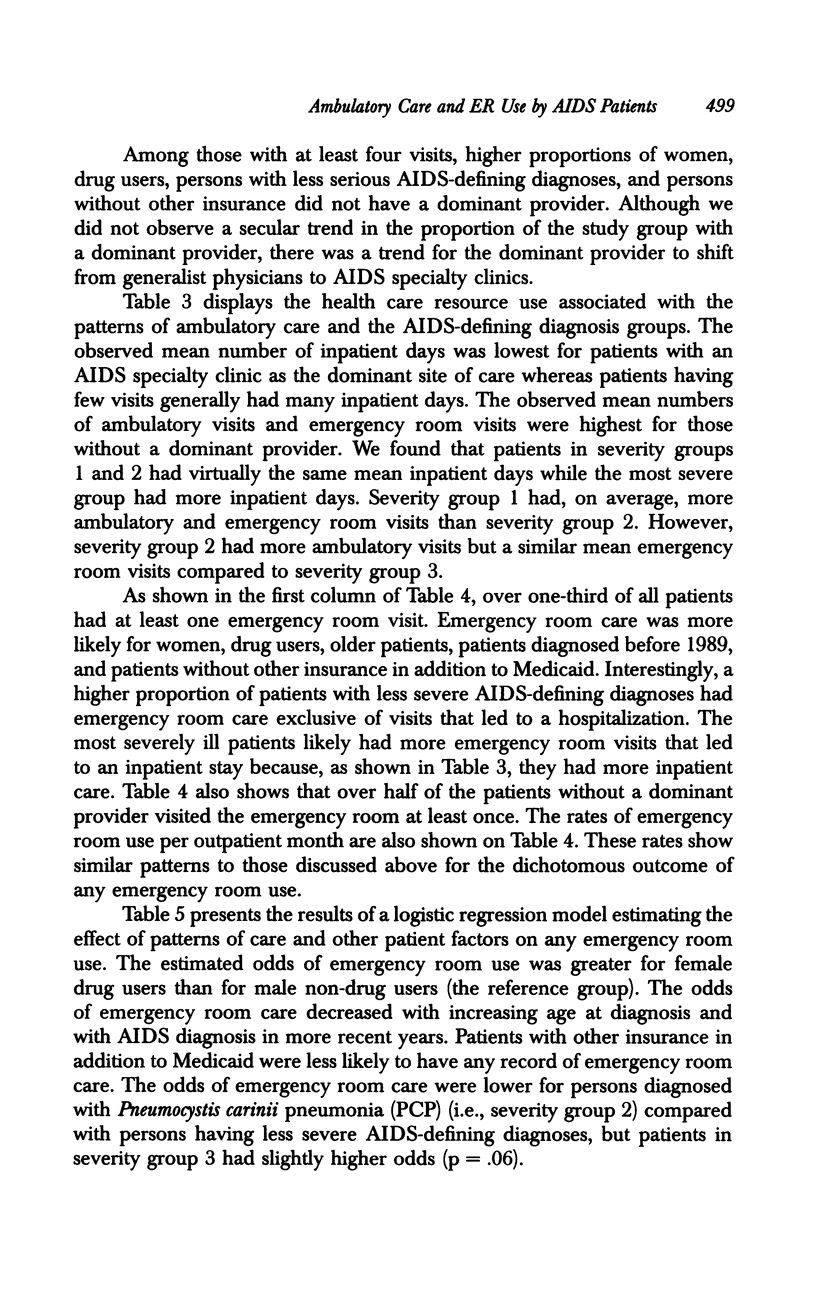
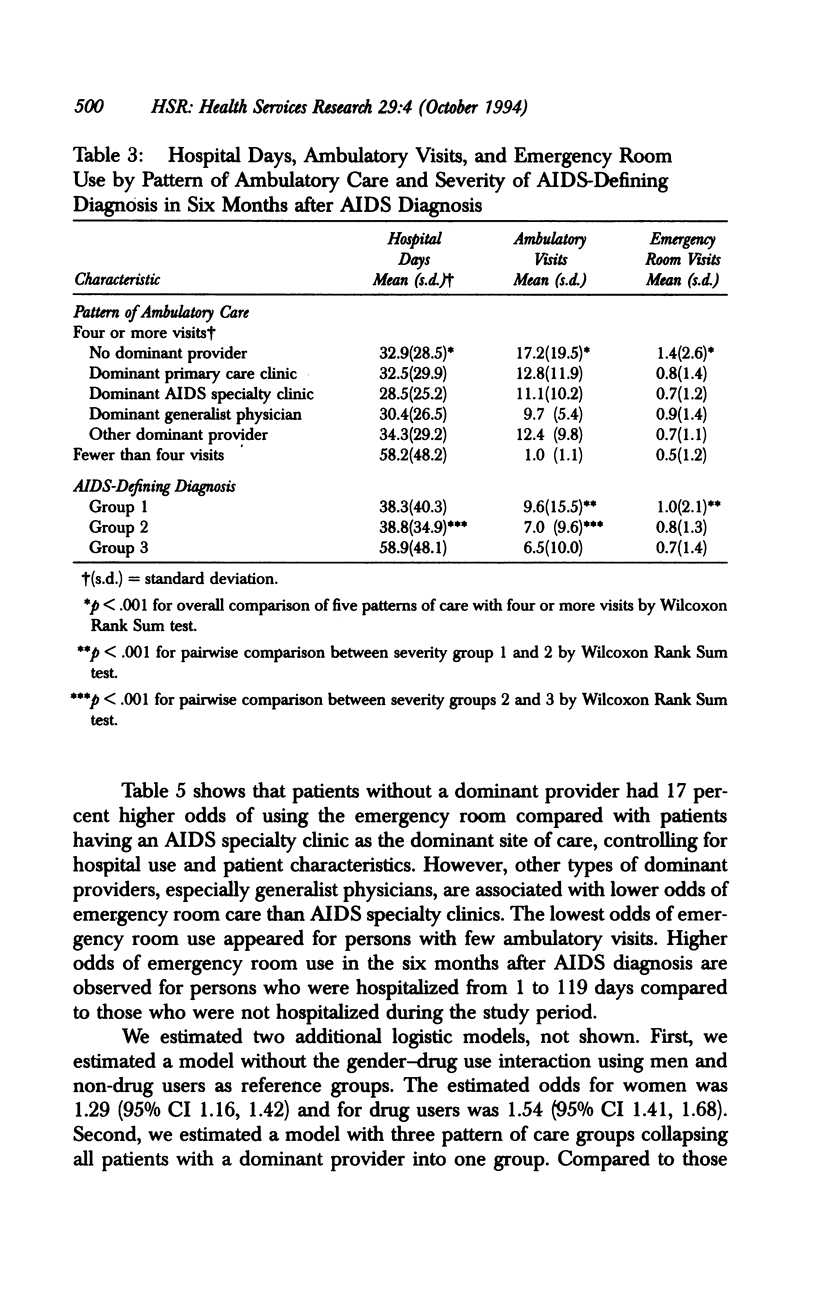

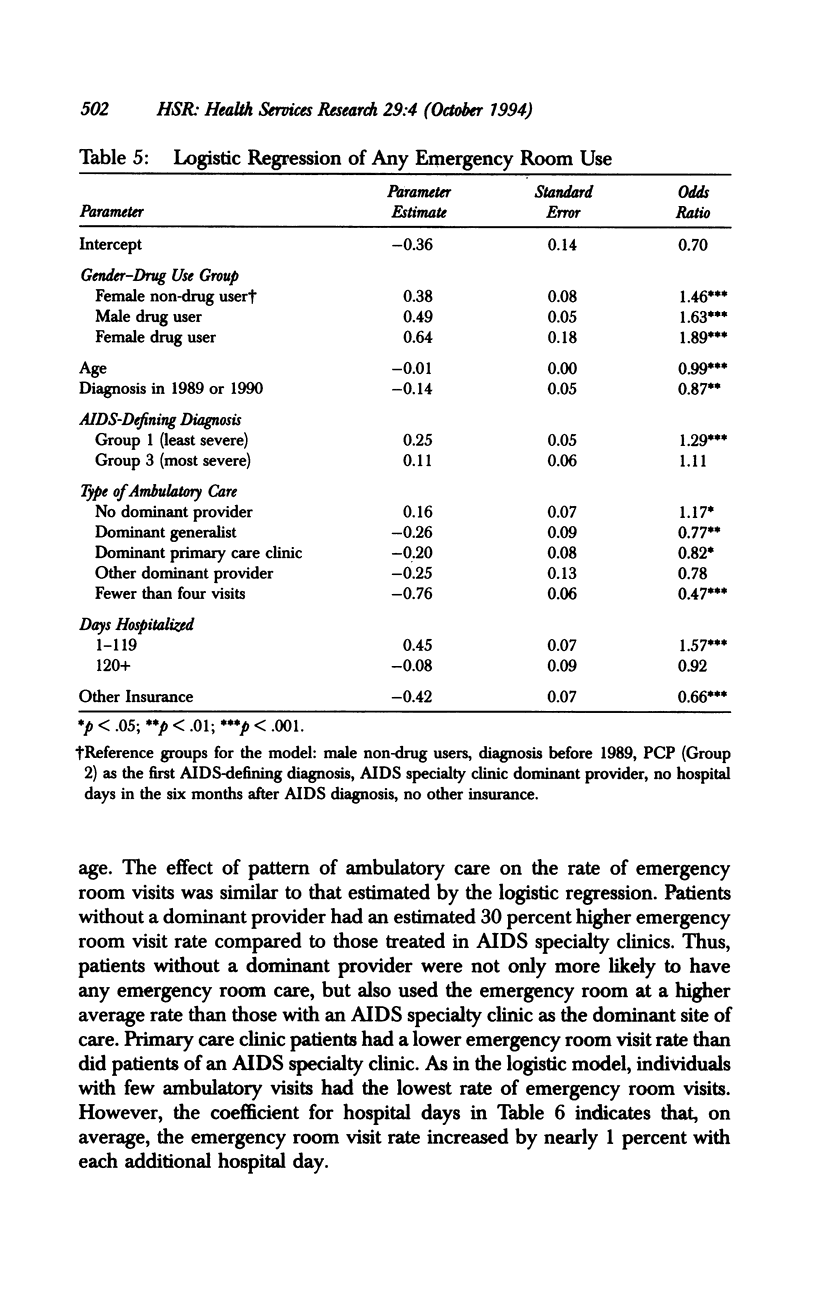
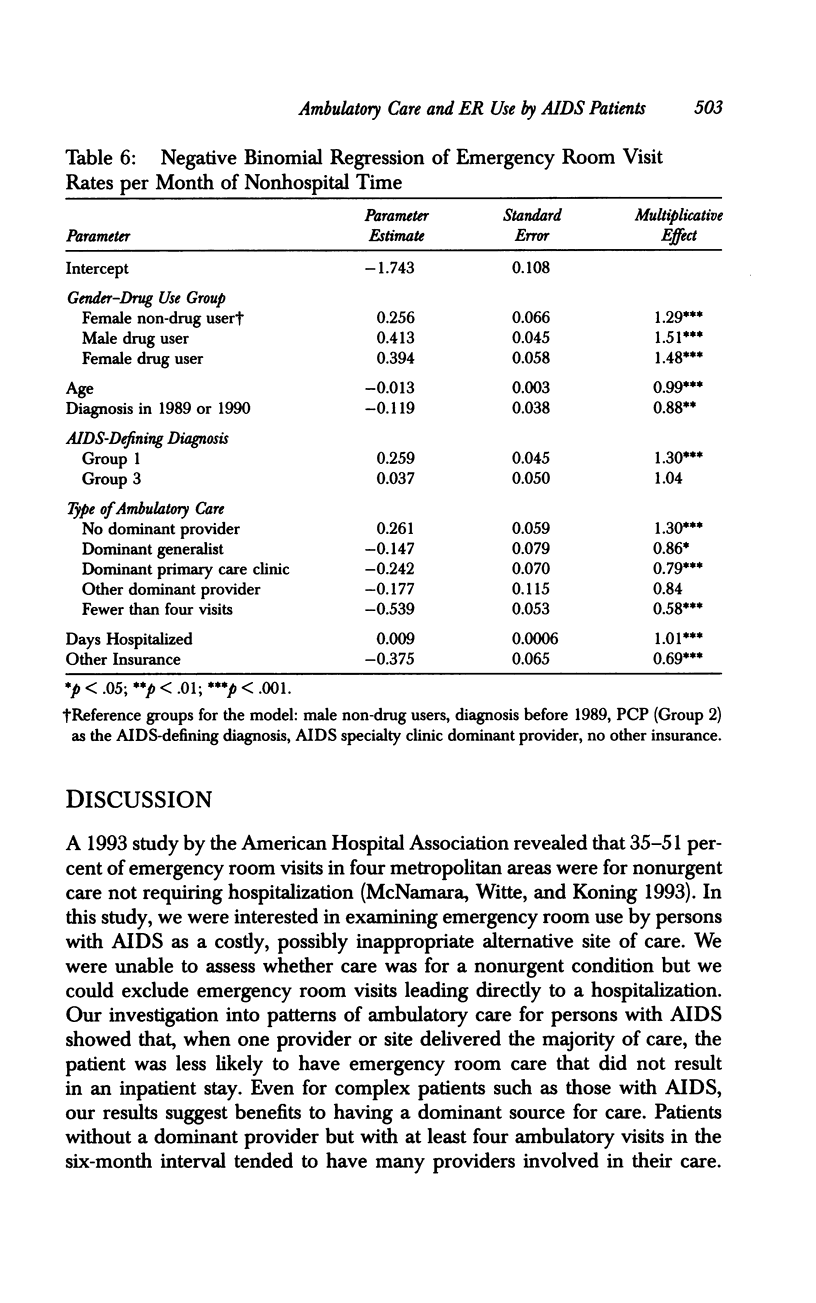
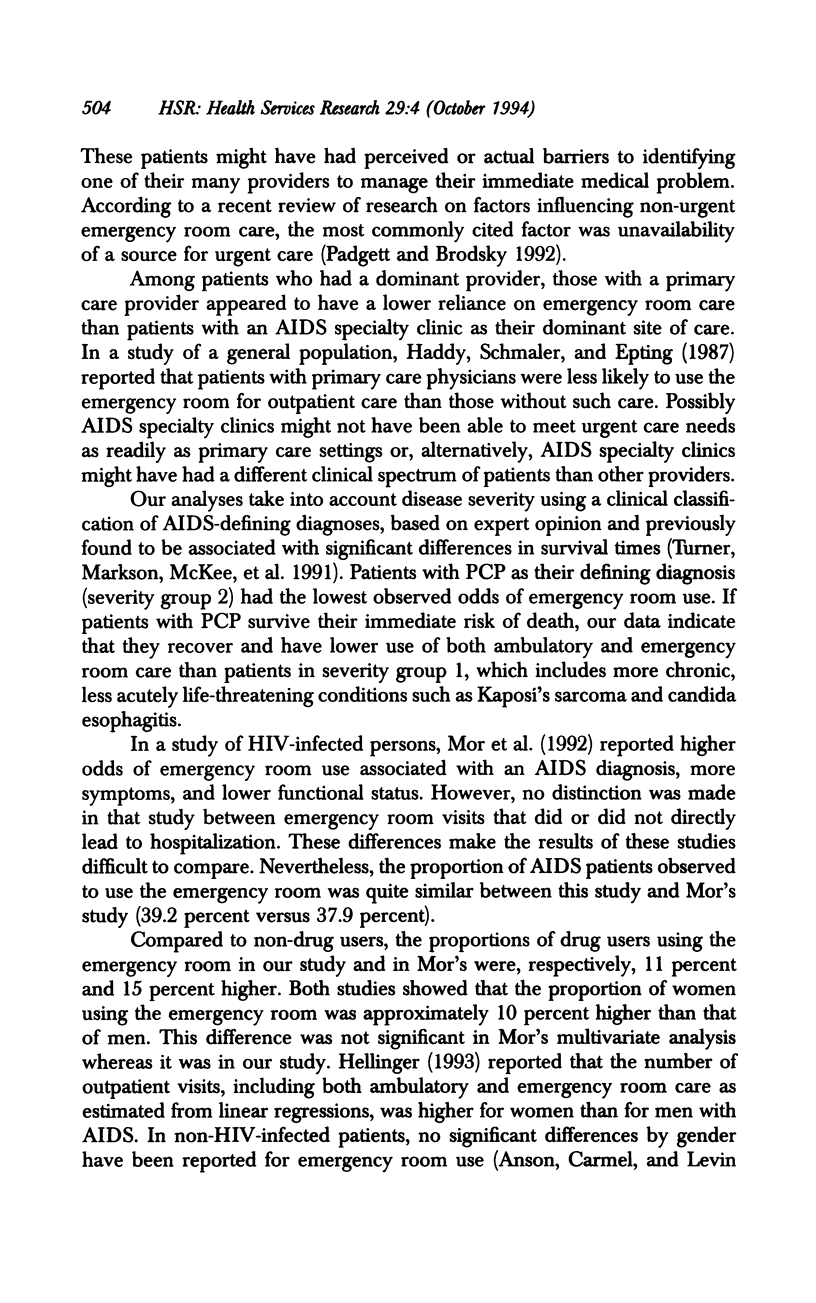




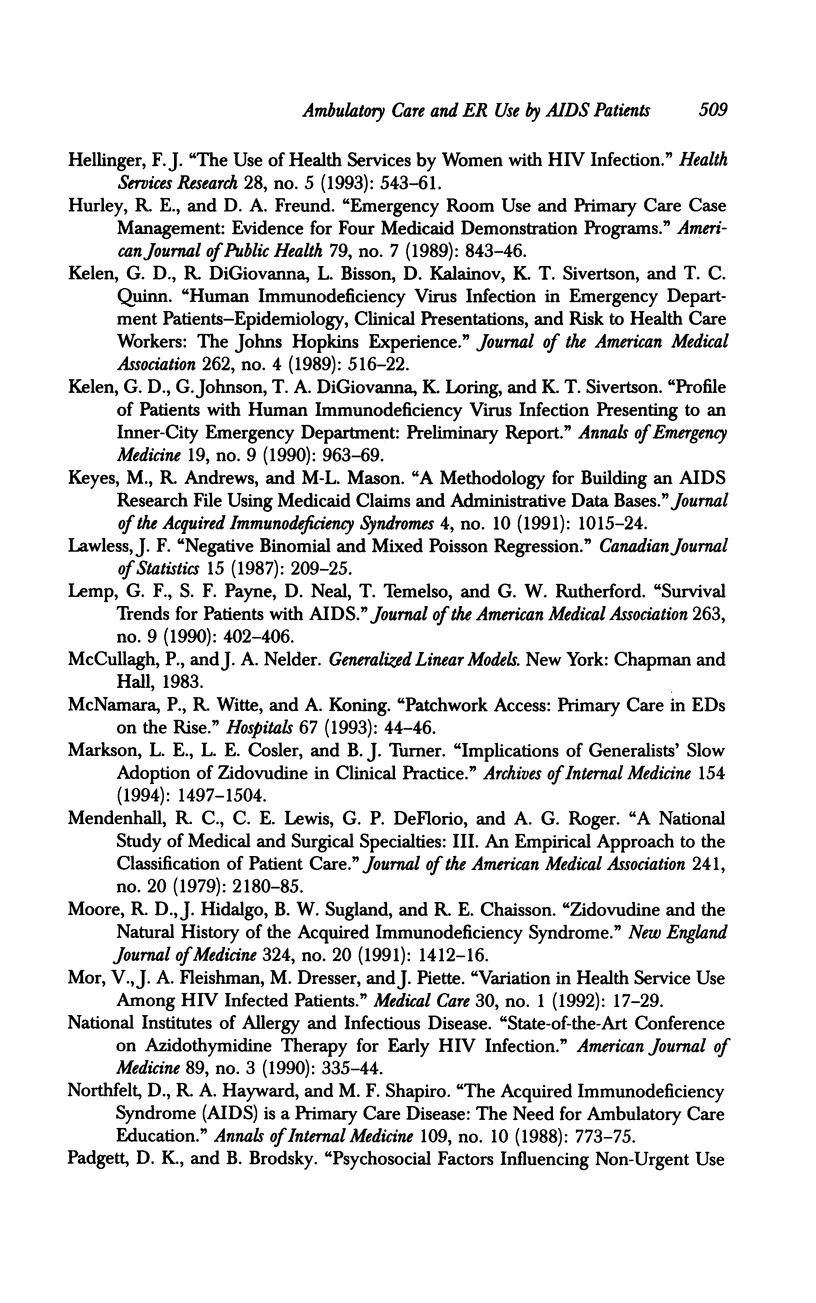
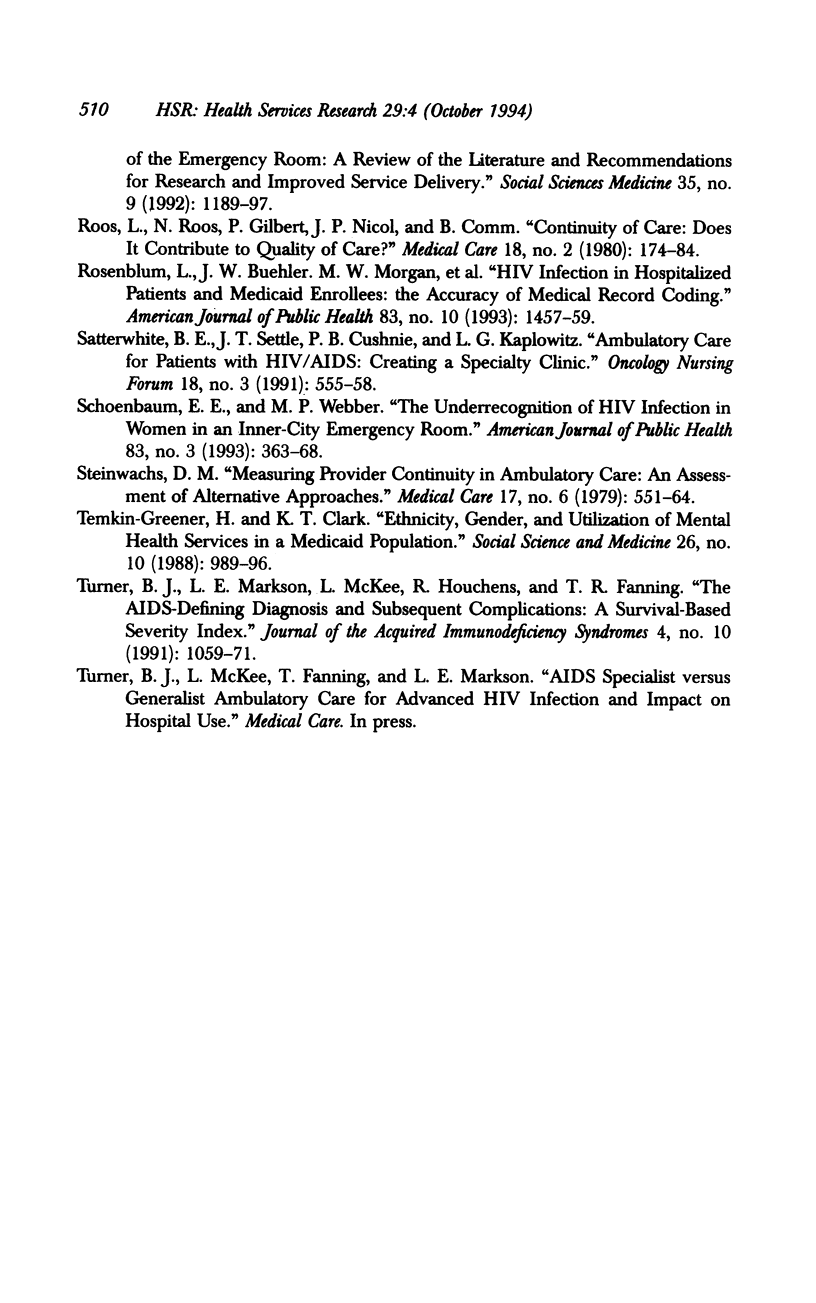
Selected References
These references are in PubMed. This may not be the complete list of references from this article.
- Anson O., Carmel S., Levin M. Gender differences in the utilization of emergency department services. Women Health. 1991;17(2):91–104. doi: 10.1300/J013v17n02_05. [DOI] [PubMed] [Google Scholar]
- Bice T. W., Boxerman S. B. A quantitative measure of continuity of care. Med Care. 1977 Apr;15(4):347–349. doi: 10.1097/00005650-197704000-00010. [DOI] [PubMed] [Google Scholar]
- Dietrich A. J., Nelson E. C., Kirk J. W., Zubkoff M., O'Connor G. T. Do primary physicians actually manage their patients' fee-for-service care? JAMA. 1988 Jun 3;259(21):3145–3149. [PubMed] [Google Scholar]
- Eriksson E. A. Continuity-of-care measures. Random assignment of patients to providers and the impact of utilization level. Med Care. 1990 Feb;28(2):180–190. [PubMed] [Google Scholar]
- Goldberg H. I., Dietrich A. J. The continuity of care provided to primary care patients. A comparison of family physicians, general internists, and medical subspecialists. Med Care. 1985 Jan;23(1):63–73. doi: 10.1097/00005650-198501000-00007. [DOI] [PubMed] [Google Scholar]
- Haddy R. I., Schmaler M. E., Epting R. J. Nonemergency emergency room use in patients with and without primary care physicians. J Fam Pract. 1987 Apr;24(4):389–392. [PubMed] [Google Scholar]
- Hellinger F. J. The use of health services by women with HIV infection. Health Serv Res. 1993 Dec;28(5):543–561. [PMC free article] [PubMed] [Google Scholar]
- Hurley R. E., Freund D. A., Taylor D. E. Emergency room use and primary care case management: evidence from four Medicaid demonstration programs. Am J Public Health. 1989 Jul;79(7):843–846. doi: 10.2105/ajph.79.7.843. [DOI] [PMC free article] [PubMed] [Google Scholar]
- Kelen G. D., DiGiovanna T., Bisson L., Kalainov D., Sivertson K. T., Quinn T. C. Human immunodeficiency virus infection in emergency department patients. Epidemiology, clinical presentations, and risk to health care workers: the Johns Hopkins experience. JAMA. 1989 Jul 28;262(4):516–522. doi: 10.1001/jama.262.4.516. [DOI] [PubMed] [Google Scholar]
- Kelen G. D., Johnson G., DiGiovanna T. A., Loring K., Sivertson K. T. Profile of patients with human immunodeficiency virus infection presenting to an inner-city emergency department: preliminary report. Ann Emerg Med. 1990 Sep;19(9):963–969. doi: 10.1016/s0196-0644(05)82555-7. [DOI] [PubMed] [Google Scholar]
- Keyes M., Andrews R., Mason M. L. A methodology for building an AIDS research file using Medicaid claims and administrative data bases. J Acquir Immune Defic Syndr. 1991;4(10):1015–1024. [PubMed] [Google Scholar]
- Lemp G. F., Payne S. F., Neal D., Temelso T., Rutherford G. W. Survival trends for patients with AIDS. JAMA. 1990 Jan 19;263(3):402–406. [PubMed] [Google Scholar]
- Markson L. E., Cosler L. E., Turner B. J. Implications of generalists' slow adoption of zidovudine in clinical practice. Arch Intern Med. 1994 Jul 11;154(13):1497–1504. [PubMed] [Google Scholar]
- McNamara P., Witte R., Koning A. Patchwork access. Primary care in EDs on the rise. Hospitals. 1993 May 20;67(10):44–46. [PubMed] [Google Scholar]
- Mendenhall R. C., Lewis C. E., DeFlorio G. P., Girard R. A. A national study of medical and surgical specialties. III. An empirical approach to the classification of patient care. JAMA. 1979 May 18;241(20):2180–2185. [PubMed] [Google Scholar]
- Moore R. D., Hidalgo J., Sugland B. W., Chaisson R. E. Zidovudine and the natural history of the acquired immunodeficiency syndrome. N Engl J Med. 1991 May 16;324(20):1412–1416. doi: 10.1056/NEJM199105163242006. [DOI] [PubMed] [Google Scholar]
- Mor V., Fleishman J. A., Dresser M., Piette J. Variation in health service use among HIV-infected patients. Med Care. 1992 Jan;30(1):17–29. doi: 10.1097/00005650-199201000-00002. [DOI] [PubMed] [Google Scholar]
- Northfelt D. W., Hayward R. A., Shapiro M. F. The acquired immunodeficiency syndrome is a primary care disease. Ann Intern Med. 1988 Nov 15;109(10):773–775. doi: 10.7326/0003-4819-109-10-773. [DOI] [PubMed] [Google Scholar]
- Roos L. L., Roos N. P., Gilbert P., Nicol J. P. Continuity of care: does it contribute to quality of care? Med Care. 1980 Feb;18(2):174–184. doi: 10.1097/00005650-198002000-00004. [DOI] [PubMed] [Google Scholar]
- Rosenblum L., Buehler J. W., Morgan M. W., Costa S., Hidalgo J., Holmes R., Lieb L., Shields A., Whyte B. HIV infection in hospitalized patients and Medicaid enrollees: the accuracy of medical record coding. Am J Public Health. 1993 Oct;83(10):1457–1459. doi: 10.2105/ajph.83.10.1457. [DOI] [PMC free article] [PubMed] [Google Scholar]
- Satterwhite B. E., Settle J. T., Cushnie P. B., Kaplowitz L. G. Ambulatory care for patients with HIV/AIDS: creating a specialty clinic. Oncol Nurs Forum. 1991 Apr;18(3):555–558. [PubMed] [Google Scholar]
- Schoenbaum E. E., Webber M. P. The underrecognition of HIV infection in women in an inner-city emergency room. Am J Public Health. 1993 Mar;83(3):363–368. doi: 10.2105/ajph.83.3.363. [DOI] [PMC free article] [PubMed] [Google Scholar]
- Steinwachs D. M. Measuring provider continuity in ambulatory care: an assessment of alternative approaches. Med Care. 1979 Jun;17(6):551–565. doi: 10.1097/00005650-197906000-00001. [DOI] [PubMed] [Google Scholar]
- Temkin-Greener H., Clark K. T. Ethnicity, gender, and utilization of mental health services in a Medicaid population. Soc Sci Med. 1988;26(10):989–996. doi: 10.1016/0277-9536(88)90216-x. [DOI] [PubMed] [Google Scholar]
- Turner B. J., Markson L. E., McKee L., Houchens R., Fanning T. The AIDS-defining diagnosis and subsequent complications: a survival-based severity index. J Acquir Immune Defic Syndr. 1991;4(10):1059–1071. [PubMed] [Google Scholar]


